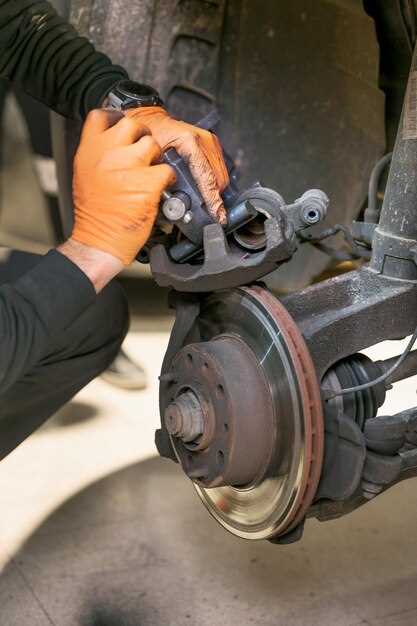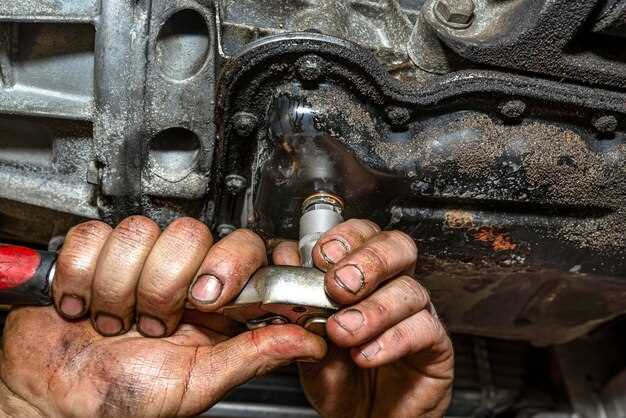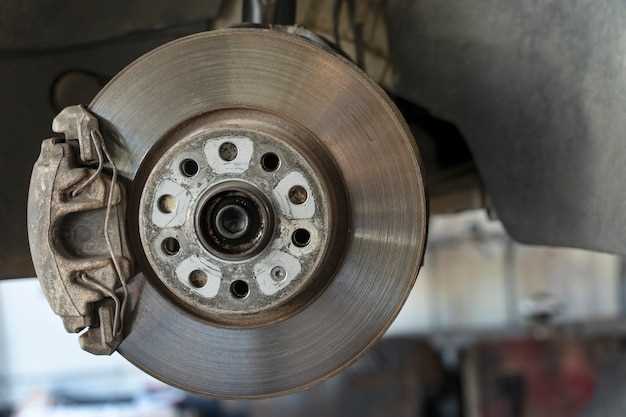
The suspension system in classic muscle cars plays a vital role in enhancing driving performance and ensuring safety. As these iconic vehicles age, the suspension components can wear out, leading to compromised performance and a less enjoyable driving experience. Properly replacing these parts not only restores the car’s original handling characteristics but also contributes to its overall value and longevity.
For enthusiasts and restorers, understanding the intricacies of suspension systems is essential. Whether it’s the shocks, struts, control arms, or bushings, each component must be evaluated for wear and functionality. Replacing suspension parts may seem daunting at first, but with the right tools and knowledge, it can be a rewarding process that enhances both the performance and aesthetics of these classic machines.
In this article, we will explore the key steps involved in replacing suspension parts, the tools required, and the benefits of upgrading to modern alternatives. By following these guidelines, you can ensure that your muscle car not only looks great but also drives as it was intended, offering an exhilarating experience on the road.
Assessing the Condition of Your Suspension Components
When embarking on the restoration of a classic muscle car, evaluating the condition of your suspension components is essential for both safety and performance. Begin by inspecting the springs, shocks, and control arms for any visible signs of wear or damage. Look for cracks, rust, or excessive corrosion, as these issues can compromise the integrity of the suspension system.
Next, check the bushings and mounting points for signs of deterioration. Worn bushings can lead to excessive play in the suspension, affecting handling and stability. If you notice any signs of cracking or softness in the rubber, it may be time for a replacement. Additionally, pay attention to the ball joints and tie rod ends; any play in these components can indicate they are on the verge of failure.
It’s also advisable to inspect the alignment settings of your suspension. Misalignment can cause uneven tire wear and affect the overall ride quality. Regularly checking and adjusting alignment is an essential part of maintaining a muscle car’s suspension system.
Consider the age of your suspension parts as well. Many classic muscle cars have components that are decades old, which may have reached the end of their functional lifespan. Replacing worn or outdated parts not only enhances safety but also improves handling and overall driving experience.
In summary, assessing the condition of your suspension components is a critical step in the restoration process. A thorough inspection will help identify areas needing attention, ensuring your classic muscle car not only looks great but also performs at its best.
Choosing the Right Replacement Parts for Your Restorations
Selecting the appropriate replacement parts for your classic muscle car’s suspension is crucial for achieving optimal performance and safety. When sourcing these parts, consider both originality and functionality. Decide whether you want factory-stock components that maintain the vehicle’s vintage appeal or modern upgrades that enhance handling and ride comfort.
Research is essential to ensure compatibility. Not all parts are interchangeable across different models or years. Verify part numbers and specifications against your vehicle’s original build sheet. This step can prevent costly mistakes and improve the overall restoration quality.
Quality matters immensely when it comes to suspension components. Look for reputable manufacturers who specialize in classic muscle car parts. High-quality materials and precise engineering will ensure longevity and reliability. Read reviews and seek recommendations from fellow restorers to identify trusted sources.
Don’t overlook the importance of installation. Sometimes, the best replacement parts can be rendered ineffective if not installed correctly. If you’re not experienced in working with suspension systems, consider enlisting a professional. Proper alignment and adjustments are vital for the suspension to function as intended.
Finally, keep an eye on the cost. While it may be tempting to choose the cheapest option, remember that inferior parts can lead to more significant expenses down the line. Invest in parts that offer the best balance between quality and affordability to ensure your restoration project stands the test of time.
Step-by-Step Guide to Removing Old Suspension Parts
Removing old suspension parts from classic muscle cars is a crucial process for restoration and performance improvement. Follow these detailed steps to ensure a successful removal.
Step 1: Gather Necessary Tools
Before beginning, collect essential tools such as a socket set, wrenches, a jack, jack stands, a pry bar, and penetrating oil. Having everything on hand will streamline the process.
Step 2: Safety First
Park the vehicle on a stable, flat surface and engage the parking brake. Always wear safety goggles and gloves to protect yourself from debris and sharp edges.
Step 3: Lift the Vehicle
Using a jack, lift the car and secure it with jack stands. Ensure it’s stable before proceeding. Never rely solely on the hydraulic jack for safety.
Step 4: Remove Wheels
Take off the wheels to access the suspension components. Unscrew the lug nuts in a star pattern to prevent warping. Set the wheels aside in a safe location.
Step 5: Inspect Suspension Components
Examine the suspension parts carefully. Look for signs of wear or damage, such as cracks or excessive rust. This will help you determine which parts need replacement.
Step 6: Apply Penetrating Oil
If any bolts look corroded, apply penetrating oil and let it sit for at least 10-15 minutes. This will help loosen stubborn bolts and nuts before you attempt removal.
Step 7: Remove the Shock Absorbers
Locate the attachment points of the shock absorbers. Use the appropriate socket or wrench to remove the bolts. Be cautious, as some pressure may still be present in older shocks.
Step 8: Detach Control Arms
Next, focus on detaching the control arms. Undo the bolts at both ends of the arms using a wrench. You may need to use a pry bar to gently free them from their mounting points.
Step 9: Remove the Springs
If your vehicle has coil springs, compress them using a spring compressor before removal. Once compressed, carefully unscrew the retaining bolts and detach the springs from their mounts.
Step 10: Final Inspection
Once all parts are removed, inspect the mounting points for any damage or corrosion. Clean the area thoroughly to prepare for the installation of new suspension parts.
Following this step-by-step guide will help you effectively remove old suspension parts from your classic muscle car, setting the stage for upgrades and improved handling.
Proper Installation Techniques for New Suspension Components

When restoring classic muscle cars, the installation of new suspension components is critical for enhancing performance and ensuring safety. Following proper techniques during installation not only extends the life of the new parts but also contributes to a smoother ride and better handling.
Before beginning the installation process, it is essential to gather all necessary tools and components. Make sure to have high-quality replacement parts that are compatible with your specific vehicle model. Refer to the manufacturer’s specifications and guidelines for optimal results.
| Step | Description |
|---|---|
| 1. Preparation | Ensure that the vehicle is on a flat surface and securely raise it with jack stands. Remove the wheels for easy access. |
| 2. Remove Old Components | Carefully detach the existing suspension parts. Take note of the order of removal to aid in reassembly. |
| 3. Clean Surfaces | Inspect and clean the mounting areas of any debris or rust. This ensures a proper fit for the new components. |
| 4. Install New Parts | Begin installing the new suspension components. Use a torque wrench to tighten bolts to the manufacturer’s specifications, ensuring proper alignment. |
| 5. Check Alignment | After installation, ensure that the suspension geometry is correct. A wheel alignment is recommended to prevent uneven tire wear and handling issues. |
| 6. Test Drive | Take the vehicle for a test drive to check for any unusual noises or handling issues. Make adjustments as needed. |
Using these installation techniques during the restoration of classic muscle cars will help achieve a reliable and high-performing suspension system. Remember, meticulousness in this process enhances the overall driving experience and preserves the integrity of the vehicle.
Tuning Your Suspension Setup for Optimal Performance

Tuning the suspension on classic muscle cars is essential to achieving optimal performance, especially during restoration projects. A well-adjusted suspension enhances handling, improves ride quality, and maximizes tire contact with the road. This process involves carefully selecting components and making adjustments to meet specific driving conditions and preferences.
First, assess the existing suspension system. Many classic muscle cars were equipped with outdated components that may not meet today’s performance standards. Upgrading to modern parts, such as adjustable coilovers or performance shocks, provides better control and increased flexibility in tuning. These modern options allow for adjustments in ride height, stiffness, and damping, catering to both road and track use.
Next, consider the weight distribution of your vehicle. Classic muscle cars often have a front-heavy balance due to large engines. Proper tuning can involve adjusting the sway bars, camber, and alignment settings to enhance handling characteristics. A well-tuned suspension will help maintain tire contact during cornering, reducing body roll and improving stability.
Another critical aspect is evaluating the type of driving you plan to do. For street driving, a comfortable ride is important, which may require softer spring rates. In contrast, if your intention is to take your classic muscle car to the track, stiffer springs and dampers may be necessary to enhance grip and responsiveness. Understanding these dynamics is key to achieving the desired performance levels.
Finally, don’t overlook the importance of proper installation and regular maintenance. Regularly checking alignment and suspension geometry after any significant changes is vital to ensure longevity and performance. Engaging professionals with experience in muscle car restoration can provide insights into optimal setups tailored to your vehicle.
In summary, tuning the suspension on classic muscle cars during restoration involves a methodical approach encompassing the selection of quality components, understanding vehicle dynamics, and regular maintenance. This ensures that your muscle car performs at its best, delivering both excitement and reliability on the road.
Maintaining Your New Suspension Parts for Longevity
Proper maintenance of your new suspension parts is essential to ensure their durability and performance. By following these guidelines, you can extend the lifespan of your suspension components and enjoy a smoother ride in your classic muscle car.
Here are key maintenance tips:
- Regular Inspections: Conduct routine checks on suspension components for signs of wear, such as cracks, rust, or play in the joints.
- Cleanliness: Keep suspension parts clean and free from dirt and debris. Use a gentle cleaner to avoid damaging protective coatings.
- Lubrication: Apply appropriate lubricant to moving parts, including bushings and joints, to reduce friction and prevent premature wear.
- Alignment Checks: Ensure proper wheel alignment frequently. Misalignment can lead to uneven wear on suspension components.
Additionally, follow these preventive measures:
- Inspect and replace worn bushings as needed to maintain a tight suspension system.
- Monitor tire pressure and tread wear; uneven tires can affect suspension performance.
- Avoid potholes and rough roads whenever possible to protect your suspension components from unnecessary impact.
Finally, consider professional help for complex inspections and repairs. A knowledgeable mechanic can provide insights and ensure that your suspension parts function optimally. Dedication to maintenance will not only enhance performance but also enhance the longevity of your classic muscle car’s suspension system.




